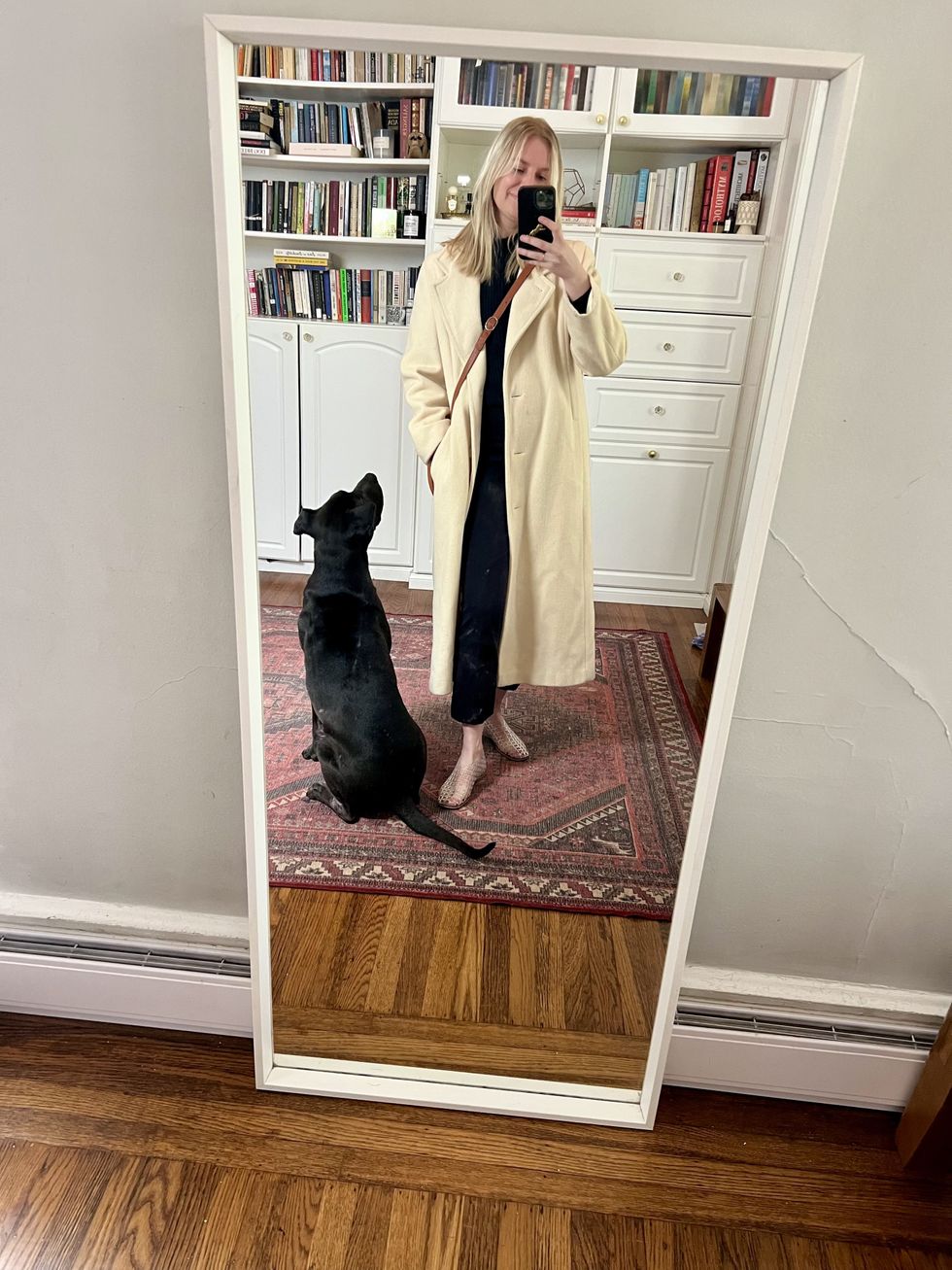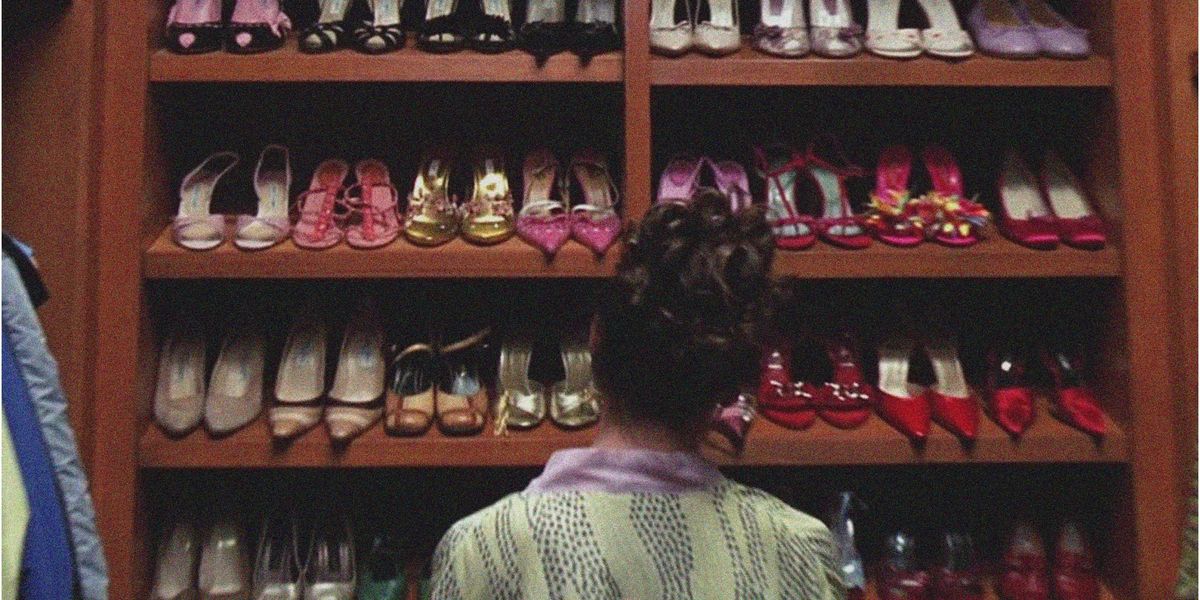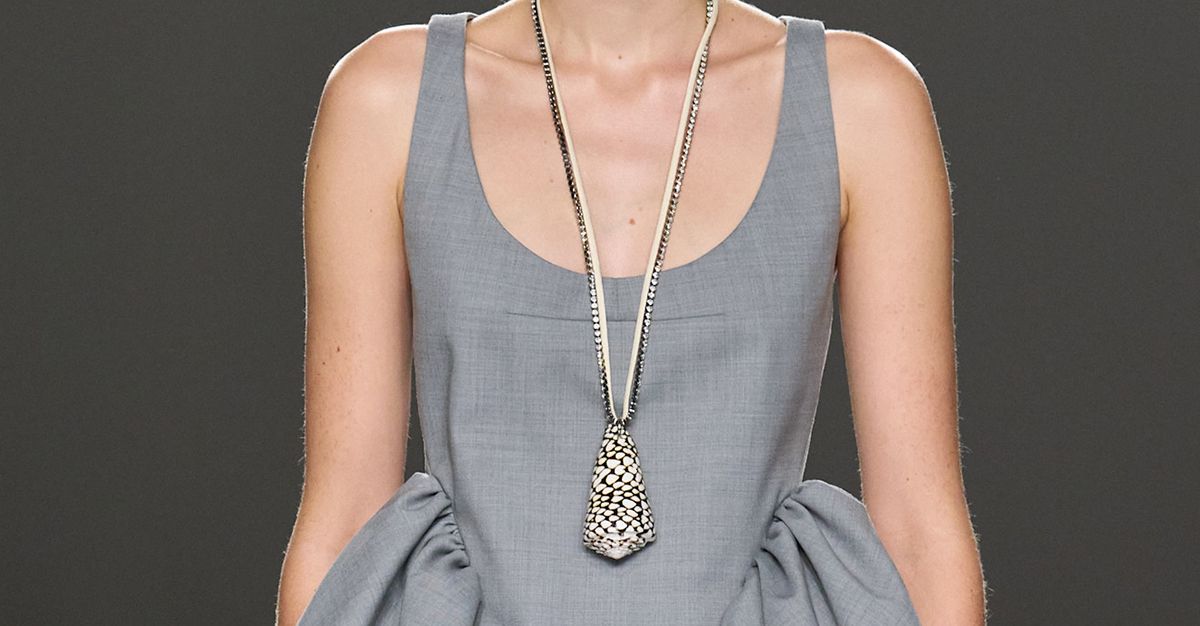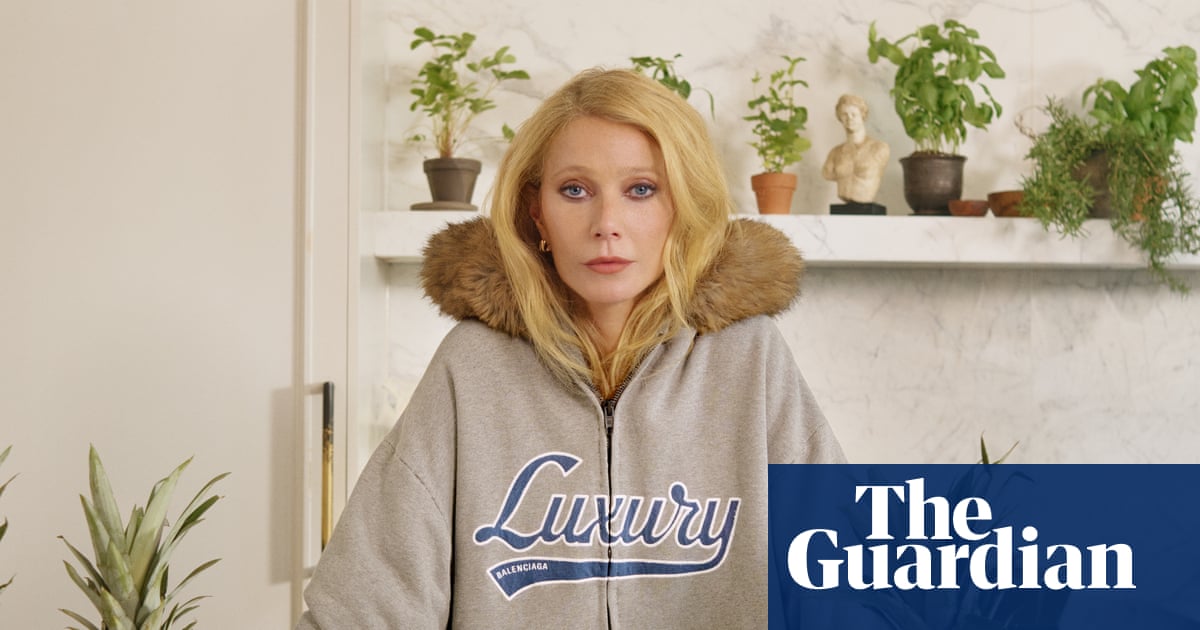While I saw the tweet jokingly calling Everlane “Forever 31” some time ago, the gag recently hit the mainstream with SNL’s sketch about a basics-and-neutrals store of the same name. As a woman in my 30s, I’ve found myself facing a perplexing paradox when it comes to personal style. There is pressure to look professional and invest in high-quality basics, but I’ve also finally arrived at an age where I feel self-actualized enough to experiment with my style. What’s a millennial to do?
Like many, I became fashion-conscious in my teens, cutting my style teeth on Forever 21 tanks that disintegrated in the wash and cardboard-y Urban Outfitters flats held together by thoughts and prayers. In my mid-twenties, I found myself facing the conundrum of being freshly impoverished from grad school, yet still expected to dress in high-quality professional wear at the office. Luckily, this coincided with the advent of Everlane supremacy. I could now afford good-quality clothes by sticking to pieces that worked both in and out of work, with basics like loose trousers and thick tees conveying just the right balance of informality and polish.
Now in 2025, I’ve left the corporate world, gone to plenty of therapy, and at long last feel at home in my body. I’m more confident and secure, and finally have the bandwidth to be interested in fashion again. The problem? Styles in 2025 seem to still be atoning for the cheap, riotous maximalism of the early 2010s galaxy leggings and owl-themed statement jewelry. “Quiet luxury” and “old money aesthetic” are all the rage. Minimalist basics continue to reign, with many turning to brands like Toteme, COS, Vince, and Quince to make up the majority of their everyday pieces.
As a 30-something-year-old, it feels like my style options are to either go full Gen Z Y2K, or to give up and embrace being “Forever 31.” Is “dressing my age” a refreshing freedom from the dictatorial monolith of youthful trends, or a creative prison? Is the current emphasis on minimalist basics an empowering uniform of self-assured adulthood, or just a new kind of conformity?
To answer these questions, I turned to three incredibly stylish experts—trend-forecaster-turned-fashion influencer Mandy Lee of OldLoserInBrooklyn; fashion writer and editor Alison Syrett Cleary; and fashion buyer-turned-therapist Aaron Hui, LMFT—for their takes and advice on how to be happily fashionable in your 30s.
All the experts agree that it’s our 30s—not our 20s—that are the perfect time to figure out your style. Firstly, as Lee points out, we usually have more time and money in our thirties. But more than that, we tend to have a stronger sense of self. Lee credits her current style with having a greater “sense of conviction” than she did in her 20s. “I don’t need anybody’s permission to wear things,” she says. “ I don’t care if something’s on trend or not, or if it’s cool or if it’s chic. I do what I want, I wear what I want, and I think people have a very strong response to my style because they see it as authentic.” Hui had a similar experience. Working in fashion in his 20s, he says, “I was very much that student who bought army pants and flip flops because Cady Heron wore army pants and flip flops.” Now in his 30s, he finds himself in “a decade of self-assuredness and confidence. Much of what I feared as a teenager or young adult is actually okay. I learned to follow my intuition and move towards what I found interesting and creative.”
While all the experts found their thirties freeing, they’re aware that might not be everyone’s experience. “Some people are afraid of aging, and use fashion to manage and cope with the inevitable,” explains Hui, “So not being able to “pull off” certain trends or fit into pants they had when they were in their 20s can feel overwhelmingly existential.” While not a fan of minimalism herself, Cleary understands the appeal of it for those who are unsure what to do with a new decade. “People love a prescription, and I see why the idea of these magical clothes that are going to make you look like a more pulled-together version of yourself is enticing.”
With her background in trend forecasting, Lee sees the minimalist, “quiet luxury” trend as just another flash in the pan, albeit one with a throw-back appeal for millennials. “I think all that “quiet luxury” stuff is the conservative push, and especially with Gen Z, who lean more conservative politically than millennials do,” she says. “But for millennials, we were fed so heavily on the “girl boss” fit in the early 2010s, which turned into wearing pencil skirts at the club, and I think a lot of people still like that style and that taste.”
However, unless a minimalist style feels genuine to you, it’s likely not going to be fulfilling–and probably won’t look great. “Unless it comes from a place of authenticity, it’s so boring,” says Cleary. “Like most good things in life, really developing a wardrobe that reflects you as a person takes time and thought.”
So how exactly do we go about building that wardrobe? Luckily, each of our experts had a ton of practical advice for not only building a closet of basics you’ll be excited to reach for in the morning, but for finding your most authentic personal style.
Start With What You Already Have
Most people’s first instinct when it comes to switching up their style or building out their wardrobe is to hit the stores (and the “order” button). However, Lee recommends doing the exact opposite. “Stop shopping. Stop buying stuff. Start wearing what you have, and take stock of what you’re actually wearing,” she advises. This way, you can not only jumpstart your fashion creativity, but can start noticing what you find yourself reaching for and what tends to stay in the drawer. “When you’re actually noticing what you are wearing all the time, you do figure out what you’re not wearing. That thing that you thought you couldn’t live without a year ago might be collecting dust, because the idea of having it maybe was more tantalizing than actually wearing it.” Lee even recommends taking a picture every morning to help track your sartorial patterns.
This method helps identify gaps in your wardrobe, which helps us be much more thoughtful and intentional with what we buy to fill them. Once you identify what’s missing, Lee says, “Those are the basics you’ve craving.” She herself does this at the start of every season. For example, while she has longer tailored black shorts, she realized at the beginning of the summer that some outfit silhouettes could use a shorter pair. Lee thus always knows exactly what to stock up on—without having to buy a capsule collection full of basics that might not be for her.
Build Out Your Basics
“My personal take is that everyone has different basics,” says Lee. “We’re fed those cookie-cutter basics like a black blazer or a sensible loafer or a plain white tee, but I would never wear a black blazer to anything. There are a million other things I would rather wear to signal that I’m professional. ‘Basics’ are something that should really apply more to your life, your lifestyle, your interests, and the rest of your wardrobe.
”For finding your own personal basics, Cleary says, “I would say to first think about people (IRL or characters in movies) whose style you admire and try to find the common threads there. You’ll probably start seeing some patterns and that will give you clues as to what sort of items would be your ‘basics.” Hui recommends asking yourself questions like, “Why does this trend speak to me? What does this invoke? Why am I drawn to this and not the other? Am I just buying this because a celebrity wore it?” (As the admitted owner of a gigantic puffer jacket that Bad Bunny once wore on a red carpet, Hui does clarify that this is a totally fine source of inspiration.)
Over time, Hui has used this method to refine his personal style; he loves a good sneaker, a nice jacket, and a pop of color. “People have begun to recognize my style (my friends all know I love a big jacket I could drown in), and shopping has become much easier as my eye edits what works for me and what doesn’t.” While Cleary’s personal style seems effortless, it’s the result of a similar process of self discovery and experimentation. “Rather than follow some bland template of ‘the best black pant,’ you should think about key pieces that you specifically can mix-and match in different ways.” Though they might not seem like the usual “capsule” wardrobe items, Cleary’s current basics include items like bright red pants, a cropped black ballerina wrap top, a vintage velvet floral wrap skirt, and patched baggy wide leg jeans. These essentials, she says, “give me so many more outfits—that feel like a reflection of me—than any standard-issue ‘quiet luxury’ basic would.”
Don’t Listen to Trends
All three experts agree that finding your style means figuring out your personal tastes, and not incorporating external trends. While Lee might have a background in trend forecasting, she doesn’t put much stock in them as far as her own wardrobe. “As a trend forecaster, I notice that most of the time people’s biggest obstacle to truly find their personal style is a lack of conviction,” she says, “And this fear of judgment or fear of not looking how they think they’re supposed to look.” As Cleary puts it, she wants her look “to be an extension of who I am versus something I’m trying to pull off or perform with.” If anything, the question should be whether the trend works for you–not the other way around. For example, Cleary was unmoved by the recent bow-and-Mary Jane mania, but found herself interested in aspects of the current balletcore style, discovering “the more feminine shape(s) to be a really nice contrast” with existing pieces in her wardrobe, “like a baggy camo-print pant or ripped-up cut-offs.”
Lee also believes that one of the best ways to create an iconic, stylish wardrobe is repetition and consistency—which means some degree of ignoring trends. “You cannot have a signature style without some form of repetition in your wardrobe or in your outfits,” she says. “ If not, you’re basically a living, breathing, explore page where it changes with the seasons and with the trends. That’s not what personal style is. It’s evolving and expanding on what you like and what you wear 80% of the time, and then 20% of the time it’s experimenting.” However, trying too hard to avoid trends can also be limiting. Overall, Lee says that she feels “agnostic” to trends. “They’re going to happen, whether you like them or not.” Given their transient nature, letting trends dictate your style–especially when you’re trying to develop a wardrobe that feels personal to you—is a trap that Cleary, Hui, and Lee recommend avoiding.
Likewise, one of Lee’s top tips is to focus on pieces that are well-tailored and made from high-quality material. This means investing in good, reusable basics—not pieces so on-trend that they’ll look silly in six months.

Ignore Everything You’ve Heard About “Dressing Your Age”
Everyone in this piece has one thing in common: none of them give any credence whatsoever in the idea of “dressing your age”, and had the same response when asked: “I never think about it…I really do think that if you are wearing something that is true to you, styled in a way that feels true and comfortable for you, it will never not be ‘too old’ or ‘too young,’” says Cleary. “Take Isabel Marant, who is well into her 50s: she has a real youthfulness to her personal style–big baggy cargos, wrap mini skirts, football ringer tees–but it completely fits her because of the way she pulls it together and carries herself. Or Alexa Chung, who is in her early 40s and still pulling off plunge-y negligee dresses in a way most girls half her age could never. ‘Does this work for my age’ is, in my opinion, simply the wrong question—it should be “Does this work for ME?”
As a mom, Cleary has experienced an even more stark shift in lifestyle and self-image. Cleary found that, “For the first time in my life, I was really struggling to get dressed not just because my body was different, but because none of my old habits and sensibilities seemed to make sense for this version of me that was in such flux.” Cleary discovered that, “Once I stopped trying to be whatever version of motherhood society puts on us and just acted and lived like me, (which happens to involve a lot of silly stilettos, super low cut and baggy jeans, and slinky little crop tops), I felt so much more secure in who I was and, in turn, who I was to my children.”
At the end of the day, it’s clear that your 30s are an amazing opportunity to reevaluate your style. We’re not pledging any sororities or courting different cliques as we figure ourselves out. There won’t be any confusion about what lunch table we belong at if we dress like Fran Fine one day and Kurt Cobain the next. And at this age, we’ve seen so many trends come and go—why not just stick with what we actually like? Personally, I plan to keep on my current track of rejecting trends I don’t like, embracing the ones I do, and wearing the styles I spent my 20s being too scared to try. I’ve learned that I love a sculptural top and being comfortable; how to use my favorite baggy jeans as a basic without going full Y2K; and that I will always love an Audrey Hepburn capri and a Cruella DeVille pointed toe no matter what the trends are.


